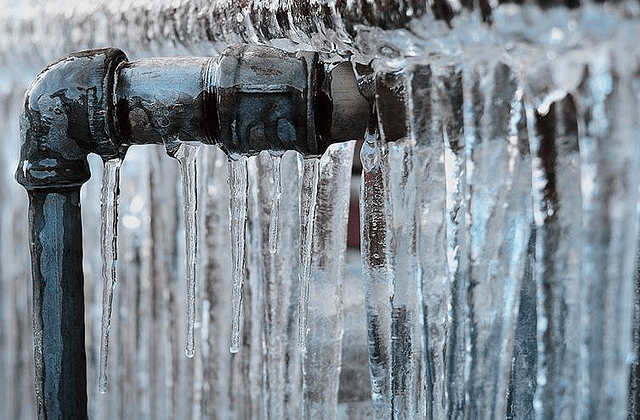Tips for Preventing Frozen Pipes in Winter: Expert Tips
Tips for Preventing Frozen Pipes in Winter: Expert Tips
Blog Article
Here on the next paragraphs you can locate some wonderful answers with regards to Winter Plumbing Precautions: Preventing Frozen Pipes.

Cold weather can wreak havoc on your plumbing, especially by freezing pipelines. Below's how to avoid it from taking place and what to do if it does.
Intro
As temperature levels decline, the risk of frozen pipes increases, potentially resulting in pricey repair work and water damages. Recognizing how to prevent icy pipelines is vital for house owners in chilly environments.
Prevention Tips
Shielding susceptible pipes
Wrap pipes in insulation sleeves or use heat tape to protect them from freezing temperatures. Focus on pipelines in unheated or exterior locations of the home.
Home heating methods
Maintain interior areas sufficiently heated up, particularly locations with pipes. Open cupboard doors to permit cozy air to circulate around pipelines under sinks.
Exactly how to determine frozen pipelines
Search for lowered water circulation from taps, uncommon odors or noises from pipelines, and noticeable frost on exposed pipes.
Long-Term Solutions
Architectural changes
Consider rerouting pipes away from exterior walls or unheated areas. Include added insulation to attic rooms, cellars, and crawl spaces.
Updating insulation
Purchase high-grade insulation for pipelines, attic rooms, and walls. Proper insulation aids keep constant temperatures and reduces the threat of frozen pipes.
Shielding Outside Plumbing
Yard hose pipes and exterior taps
Disconnect and drain pipes yard hose pipes before winter. Mount frost-proof faucets or cover outdoor taps with protected caps.
Understanding Icy Pipelines
What triggers pipelines to freeze?
Pipes ice up when exposed to temperatures listed below 32 ° F (0 ° C) for extended periods. As water inside the pipelines ices up, it increases, putting pressure on the pipe walls and possibly creating them to break.
Risks and damages
Icy pipelines can cause water interruptions, building damage, and costly repair work. Burst pipelines can flood homes and cause considerable structural damage.
Signs of Frozen Piping
Recognizing icy pipes early can prevent them from rupturing.
What to Do If Your Pipes Freeze
Immediate actions to take
If you believe frozen pipelines, keep taps open up to alleviate stress as the ice melts. Utilize a hairdryer or towels taken in hot water to thaw pipelines slowly.
Verdict
Stopping frozen pipes calls for proactive actions and quick feedbacks. By understanding the causes, indicators, and preventive measures, house owners can shield their pipes during cold weather.
5 Ways to Prevent Frozen Pipes
Drain Outdoor Faucets and Disconnect Hoses
First, close the shut-off valve that controls the flow of water in the pipe to your outdoor faucet. Then, head outside to disconnect and drain your hose and open the outdoor faucet to allow the water to completely drain out of the line. Turn off the faucet when done. Finally, head back to the shut-off valve and drain the remaining water inside the pipe into a bucket or container. Additionally, if you have a home irrigation system, you should consider hiring an expert to clear the system of water each year.
Insulate Pipes
One of the best and most cost-effective methods for preventing frozen water pipes is to wrap your pipes with insulation. This is especially important for areas in your home that aren’t exposed to heat, such as an attic. We suggest using foam sleeves, which can typically be found at your local hardware store.
Keep Heat Running at 65
Your pipes are located inside your walls, and the temperature there is much colder than the rest of the house. To prevent your pipes from freezing, The Insurance Information Institute suggests that you keep your home heated to at least 65 degrees, even when traveling. You may want to invest in smart devices that can keep an eye on the temperature in your home while you’re away.
Leave Water Dripping
Moving water — even a small trickle — can prevent ice from forming inside your pipes. When freezing temps are imminent, start a drip of water from all faucets that serve exposed pipes. Leaving a few faucets running will also help relieve pressure inside the pipes and help prevent a rupture if the water inside freezes.
Open Cupboard Doors
Warm your kitchen and bathroom pipes by opening cupboards and vanities. You should also leave your interior doors ajar to help warm air circulate evenly throughout your home.

Hopefully you liked our topic about Preventing and dealing with frozen pipes. Thanks for taking the time to read through our posting. Enjoyed reading our content? Please quickly share it. Let another person discover it. Many thanks for your time invested reading it.
Instant Quote Report this page